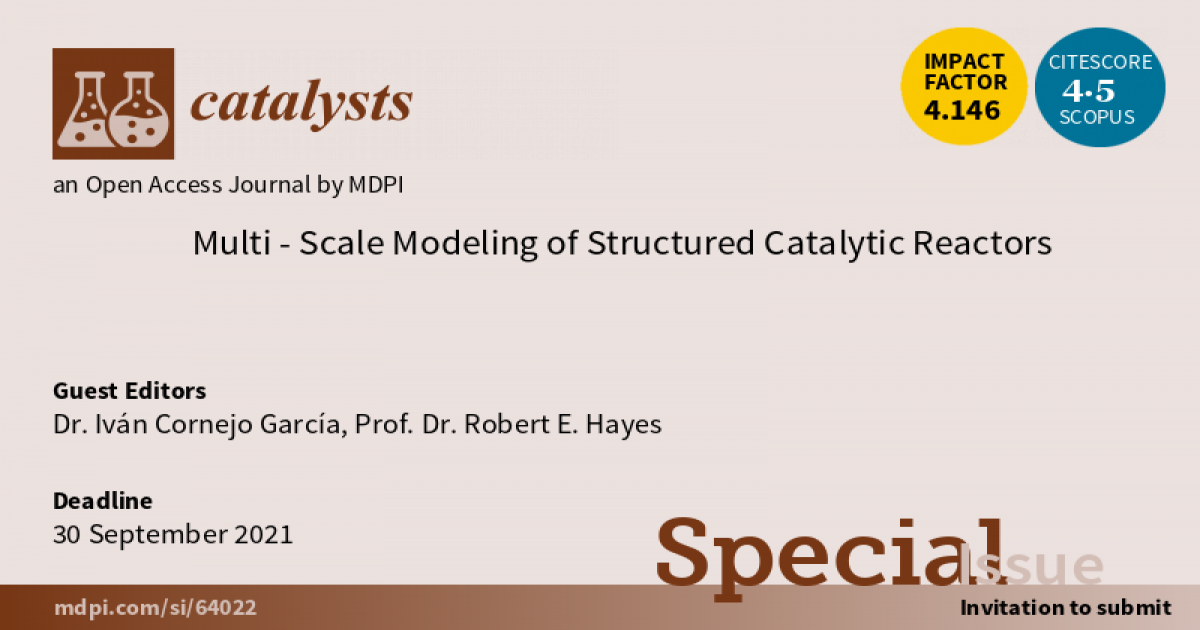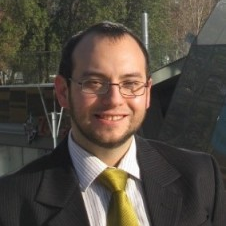Multi-Scale Modeling of Structured Catalytic Reactors
A special issue of Catalysts (ISSN 2073-4344).
Deadline for manuscript submissions: closed (30 September 2021) | Viewed by 15820

Special Issue Editors
Interests: multiscale modeling; hydrogen conversion; CO2 utilization; structured catalytic reactors; computational models
Interests: catalyst; oxidation; chemical engineering; reactors; chemical reaction engineering; fluid; finite element method; sustainability
Special Issues, Collections and Topics in MDPI journals
Special Issue Information
Dear Colleagues,
Computer-aided optimization has a promising future in the chemical processes industry, especially in the design of process units. Chemical reactors are the crucial common element in any process that involves conversion. A traditional approach for reactor design is to use a combined approach consisting of a set of fundamental design equations with experimental data. That strategy is convenient because experiments are often expensive and challenging, while fundamental equations used on their own may result in badly sized units under many circumstances. An interesting alternative is the use of advanced computational models. Such models consider the underlying transport processes in significantly greater detail than the simplified ideal reactor models. The accuracy of the results relies on the quality of the model considered. In recent decades, the computational power available for scientific and industrial research has increased significantly, with a simultaneous decrease in the cost of the core-hour. This favorable scenario allowed many research groups to use highly sophisticated computational models to improve our understanding and design of chemical reactors and processes in general. Despite the many advances in the topic over the last decades, there are still many challenges to address to make industrial processes more economically and environmentally attractive. This Special Issue invites significant contributions of multiscale modeling of catalytic reactors, computational models of catalytic substrates, and, especially, in environmental applications. It is hoped that the results published in this Special Issue will contribute to the faster development of the field.
Dr. Iván Cornejo García
Prof. Dr. Robert E. Hayes
Guest Editors
Manuscript Submission Information
Manuscripts should be submitted online at www.mdpi.com by registering and logging in to this website. Once you are registered, click here to go to the submission form. Manuscripts can be submitted until the deadline. All submissions that pass pre-check are peer-reviewed. Accepted papers will be published continuously in the journal (as soon as accepted) and will be listed together on the special issue website. Research articles, review articles as well as short communications are invited. For planned papers, a title and short abstract (about 250 words) can be sent to the Editorial Office for assessment.
Submitted manuscripts should not have been published previously, nor be under consideration for publication elsewhere (except conference proceedings papers). All manuscripts are thoroughly refereed through a single-blind peer-review process. A guide for authors and other relevant information for submission of manuscripts is available on the Instructions for Authors page. Catalysts is an international peer-reviewed open access monthly journal published by MDPI.
Please visit the Instructions for Authors page before submitting a manuscript. The Article Processing Charge (APC) for publication in this open access journal is 2200 CHF (Swiss Francs). Submitted papers should be well formatted and use good English. Authors may use MDPI's English editing service prior to publication or during author revisions.
Keywords
- Catalytic reactors
- Multiscale models
- Reactors characterization
- Environmental catalysis
- Hydrogen conversión
- Carbon dioxide utilization
- Computational models
Benefits of Publishing in a Special Issue
- Ease of navigation: Grouping papers by topic helps scholars navigate broad scope journals more efficiently.
- Greater discoverability: Special Issues support the reach and impact of scientific research. Articles in Special Issues are more discoverable and cited more frequently.
- Expansion of research network: Special Issues facilitate connections among authors, fostering scientific collaborations.
- External promotion: Articles in Special Issues are often promoted through the journal's social media, increasing their visibility.
- Reprint: MDPI Books provides the opportunity to republish successful Special Issues in book format, both online and in print.
Further information on MDPI's Special Issue policies can be found here.






